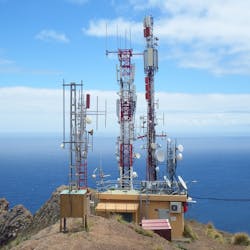The global cellular backhaul market is expected to reach revenues of $9 billion by 2015, fueled by mobile broadband's seemingly insatiable demand for more capacity, according to an updated forecast by Dell'Oro Group.As 4G LTE continues its advance, backhaul networks are increasingly transitioning to IP-based technologies. Accordingly, routers and switches will account for 30% of the $9 billion in revenues, representing a doubling of this segment over a five-year period, Dell'Oro's research indicates.These developments stand to benefit cable operators not only from a sheer supply/demand perspective, but also given the state of their infrastructure. "When it comes to capacity on the core, cable operators are the ones buying the big new routers and optical systems," said Jimmy Yu, Dell'Oro's senior director of optical and microwave research. "They are not as hindered [as telcos] with a legacy [copper] network. They are a more packet-friendly type network."Indeed, fiber-rich cable networks can be leveraged to extend service to cell sites, providing MSOs a "big advantage" compared to incumbent providers, said Jay Clark, director, carrier product and sales operations, Cox Business Services. "[Cable] has a newer and more modern fiber infrastructure that is very dense in the areas we serve."The company's commitment to providing backhaul services in its markets is paying off. In 2010, the Cox Business' wholesale division accounted for 10% of the company's $1 billion in revenue. Wireless backhaul represented a "majority of growth" in this wholesale segment and should continue to do so over the next several years as well, Clark said. He noted that Cox currently serves 3,600 cell towers with fiber.Room to GrowIndustry-wide, cable operators today serve close to 10% of the approximately 250,000 cell sites in the United States. However, of that 250,000, only a small fraction currently are high-capacity Ethernet-enabled. "[And] with packet-based backhaul, [cable operators] hold a significantly higher percentage of those towers because they have deployed more recently [than telcos]," said Chuck Kaplan, Ciena's vice president of portfolio services.Specifically, Kaplan cited a Ciena-commissioned study indicating that while only 31,000 U.S. cell towers are currently served by Ethernet backhaul, this number will jump to 327,000 of the projected 345,000 towers that will constitute the U.S. market by 2015.This forecast demand for Ethernet-enabled towers illustrates the incentive for cable operators to continue targeting the backhaul market. The good news is that revenue actually may prove to be greater than anticipated: The amount of data traveling over wireless networks more than doubled from 2009 to 2010, said Bill Beesley, principal solutions architect, packet optical networking, for Fujitsu Network Communications."Even where MSOs are already serving cell towers, the increased demand for more bandwidth will provide opportunities to generate more revenue than they are already having today," Beesley said. He added that cell towers today generally serve two wireless operators; in the future, each tower will likely accommodate four or more carriers.In addition, as MSOs are rolling out Ethernet to provide wireless backhaul, they are using the same technology to offer commercial services to businesses. In June, for example, Comcast announced metro Ethernet services available in 20 U.S. markets to businesses with 20-500 employees."I believe the business case for wireless backhaul is self-funding, but of course if you were the person making the fiber construction plan, you would probably build as intelligently as you can using information about businesses and your plant," Kaplan said.Merger MayhemThe demand for backhaul bandwidth is so great that not even the acquisition of wireless giant T-Mobile by AT&T is cooling the opportunity for cable operators -- at least not immediately."The supply of fiber or of packet-based backhaul is so much less than the demand, that in a sense, it looks like a seller's market for several years to come. No matter who you are, if you can provide cost effective packet-based backhaul to any cell tower, it is generally welcome," Kaplan said.Down the road, there may be risk depending on the terms of the merger. Towers could be decommissioned as a result of redundancy. In markets in which an operator overlaps AT&T's wireline footprint, the merged company could migrate towers to its own network. "[However,] it is going to take several years to get the initiatives underway. In the near term, we don't see too much of a change," Cox's Clark said.Tech OpportunitiesMeanwhile, a recent Wireless Backhaul Report and Order issued by the FCC will make more spectrum available and thus make it easier to use fixed microwave links to provide backhaul services -- a faster and less expensive way to reach cell towers. While underground fiber construction costs about $25 per foot, installing two ends of a point-to-point microwave link costs between $25,000 and $30,000, bringing the approximate cost per foot to a couple of dollars, Kaplan said.This is good news, particularly for the future, when wireless carriers will deploy 4G LTE in smaller tier markets that may be less accessible by fiber. "Microwave is not something we do a lot of today, but it could be a tool we look to use where it makes sense to help provide more coverage to our customers," Clark said.Monta Monaco Hernon is a freelance writer. She can be reached at [email protected].






